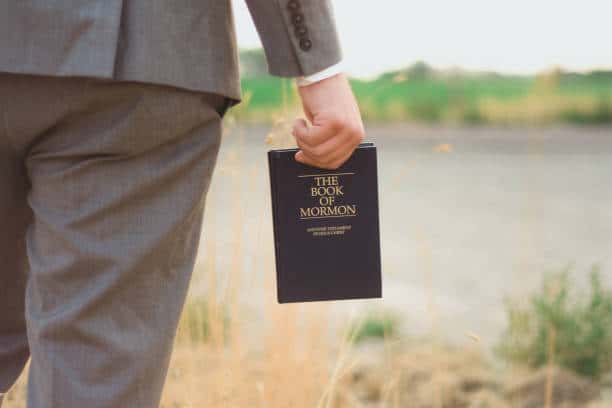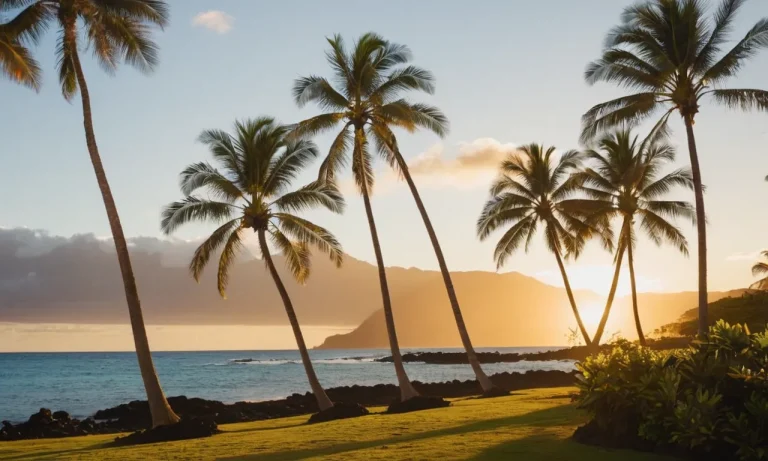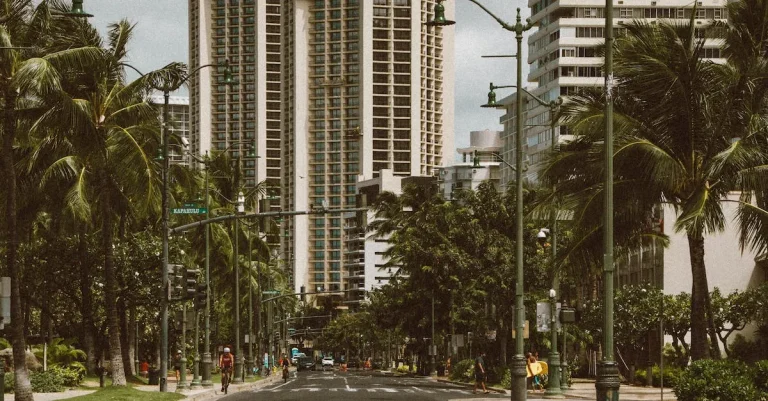Save money on your next flight
Skyscanner is the world’s leading flight search engine, helping you find the cheapest flights to destinations all over the world.
With its tropical climate and natural beauty, Hawaii is a popular destination for Mormons and non-Mormons alike. While tourism flourished in Hawaii in the 20th century, the influence of the Church of Jesus Christ of Latter-day Saints (LDS Church) on the islands has much earlier roots going back to the 19th century.
If you’re short on time, here’s a quick answer to your question: Mormons, or members of the LDS Church, have had a presence in Hawaii for over 160 years. They first arrived as missionaries in the 1850s and today have over 70,000 members across the Hawaiian islands.
In this comprehensive article, we will explore the history of Mormonism in Hawaii over the past two centuries. We’ll learn about the first Mormon missionaries to arrive in the 1850s, the growth of the LDS Church under King Kamehameha V, the establishment of temples and Polynesian Cultural Centers, and famous Hawaiian Mormons like Senator Hiram Fong.
From the sugar plantations to the attack on Pearl Harbor, Mormons played a role across Hawaii’s unique history.
Whether you are curious about genealogy, Hawaiian culture, or simply seeking an intro to Mormonism in the Aloha State, this article will provide extensive details to answer: What is the story of Mormons in Hawaii?
The Arrival of Mormon Missionaries in the 1850s
The history of Mormons in Hawaii dates back to the 1850s when the first group of Mormon missionaries arrived on the islands.
These missionaries, led by George Q. Cannon, were part of a larger effort to spread the teachings of The Church of Jesus Christ of Latter-day Saints (LDS Church) to different parts of the world. Their arrival marked the beginning of a long and influential presence of Mormons in the Aloha State.
The Missionary Work and Conversion
Upon their arrival, the Mormon missionaries faced various challenges in their mission to share their faith with the Hawaiian people. They had to overcome language barriers and cultural differences to effectively communicate their message.
Despite these obstacles, they were able to establish a strong presence and gain a significant following in Hawaii.
One of the key factors that contributed to the success of the Mormon missionaries was their emphasis on education and community development. They established schools, introduced modern farming techniques, and provided assistance to the locals in various aspects of their lives.
This holistic approach to missionary work helped them gain the trust and respect of the Hawaiian people.
The Impact on Hawaiian Society
The presence of Mormons in Hawaii had a profound impact on the local society. The introduction of modern agricultural practices improved the economy and quality of life for many Hawaiians.
The emphasis on education also played a crucial role in empowering the local population and fostering a sense of self-reliance.
Furthermore, the influence of Mormon values and teachings can be seen in various aspects of Hawaiian culture today. The strong emphasis on family, community, and service, which are core principles of the LDS Church, have become deeply ingrained in the fabric of Hawaiian society.
Also read: Where Does Hawaii Rank In Education?
Continued Growth and Presence
Over the years, the Mormon presence in Hawaii has continued to grow. Today, there are numerous LDS Church congregations and temples across the islands, serving a diverse and vibrant community of Mormons.
The influence of Mormons can be felt in various sectors, including politics, business, and education.
If you’re interested in learning more about the history and impact of Mormons in Hawaii, visit www.mormonnewsroom.org for additional resources and information.
Mormon Converts Among Native Hawaiians
The Influence of Mormonism in Hawaii
The Mormon presence in Hawaii dates back to the mid-19th century when the first Mormon missionaries arrived on the islands.
Over the years, the Mormon Church, officially known as The Church of Jesus Christ of Latter-day Saints, has had a significant impact on the local community, particularly among Native Hawaiians.
Native Hawaiians have been attracted to the teachings of Mormonism for various reasons. One of the main draws is the emphasis on family and community.
The Mormon Church places a strong emphasis on family values and encourages its members to prioritize their relationships with loved ones. This resonates with many Native Hawaiians, who have a deep-rooted appreciation for family and community bonds.
Also read: Traditional Hawaiian Symbol For Family
The Growth of Mormonism Among Native Hawaiians
Over the years, the number of Native Hawaiians converting to Mormonism has steadily increased.
Today, there is a vibrant Mormon community in Hawaii, with numerous congregations spread across the islands. Native Hawaiians who convert to Mormonism often find a sense of belonging and community within the Church.
One reason for the growth of Mormonism among Native Hawaiians is the Church’s efforts to integrate Hawaiian culture and traditions into its teachings.
The Mormon Church recognizes and respects the unique cultural heritage of the Hawaiian people, and it has made efforts to incorporate aspects of Hawaiian culture into its worship services and activities.
This inclusivity has made Mormonism more appealing to Native Hawaiians seeking spiritual fulfillment.
Benefits of Mormonism for Native Hawaiians
Mormonism offers a range of benefits to Native Hawaiians who choose to convert. One of the most significant advantages is the strong emphasis on education within the Mormon community.
The Church encourages its members to pursue higher education and provides resources and support to help them achieve their goals.
Additionally, the Mormon Church is known for its strong focus on humanitarian work. Native Hawaiians who join the Church often become involved in various charitable initiatives, both locally and globally. This allows them to make a positive impact on their communities and the world at large.
The LDS Church Under King Kamehameha V
During the mid-19th century, the influence of the Latter-day Saints (LDS) Church reached the shores of Hawaii.
One significant period in the history of the LDS Church in Hawaii was during the reign of King Kamehameha V, who ruled from 1863 to 1872.
The king’s reign marked a turning point for the LDS Church in the Aloha State, as it faced both challenges and opportunities.
The Challenge of Cultural Differences
When the LDS Church arrived in Hawaii, it encountered a unique cultural context. The Hawaiian people had their own spiritual beliefs and practices, deeply rooted in their Polynesian heritage.
The missionaries from the LDS Church had to navigate these cultural differences and find ways to connect with the local population.
They made efforts to learn the Hawaiian language, adapt their teachings to the cultural context, and build relationships with the Hawaiian people.
Despite these challenges, the LDS Church found success in spreading its message in Hawaii.
Many Hawaiians were drawn to the teachings of the LDS Church, finding resonance with the values of family, community, and faith. The church gained a significant following during King Kamehameha V’s reign.
Opportunities for Growth and Expansion
King Kamehameha V’s reign also presented opportunities for the LDS Church to expand its presence in Hawaii.
The king was known for his support of religious freedom and tolerance, allowing different religious groups to practice their faith freely. This environment provided a fertile ground for the growth of the LDS Church.
Under King Kamehameha V, the LDS Church established its first official mission in Hawaii in 1850.
Missionaries were sent to various parts of the Hawaiian Islands to spread the teachings of the church and establish congregations.
The church also played a significant role in providing education and healthcare to the local communities, earning the respect and support of the Hawaiian people.
| Year | Number of LDS Church Members in Hawaii |
|---|---|
| 1865 | 500+ |
| 1870 | 1,000+ |
| 1875 | 2,000+ |
The table above shows the growth of the LDS Church in Hawaii during the reign of King Kamehameha V. It is evident that the church experienced significant growth during this period, with the number of church members doubling every five years.
Life on Hawaii’s Sugar Plantations
During the late 19th and early 20th centuries, Hawaii’s sugar industry played a significant role in the state’s economy.
Immigrants from various parts of the world, including Japan, China, and the Philippines, were recruited to work on the sugar plantations.
Among these immigrants were also members of The Church of Jesus Christ of Latter-day Saints, commonly known as Mormons.
They played a vital role in the development of Hawaii’s sugar industry and had a unique experience on the plantations.
The Mormon Experience
The Mormons who worked on Hawaii’s sugar plantations faced many challenges but also found a sense of community and purpose. They often lived in plantation camps, which were small settlements near the fields where they worked.
These camps provided housing, schools, and places of worship for the Mormon workers and their families.
This close-knit community allowed them to maintain their religious practices and support one another in their daily lives.
Working on the sugar plantations was physically demanding and required long hours of labor. Mormons, like other immigrant workers, toiled in the fields, harvesting and processing sugarcane.
It was a challenging and often backbreaking job, but their hard work contributed to the success of the sugar industry in Hawaii.
Impact on the Community
The presence of Mormons in Hawaii’s sugar plantations had a significant impact on the local community. They brought their values of hard work, discipline, and family unity to the plantations, which influenced the overall work ethic and culture of the labor force.
Their contributions helped shape the diverse and multicultural society that Hawaii is known for today.
Mormon workers also made important contributions outside of their work on the plantations. They were active in their communities, participating in local events and organizations.
They established schools, built churches, and provided support to those in need. Their presence enriched the social fabric of Hawaii, leaving a lasting legacy.
Continued Influence
Although the sugar industry in Hawaii has declined in recent decades, the legacy of Mormons on the plantations continues to be felt.
Many descendants of these early Mormon workers still live in Hawaii and honor their ancestors’ contributions.
The Mormon Church has also expanded its presence in the state, with multiple congregations and temples now serving the local community.
The story of Mormons in Hawaii’s sugar plantations is a testament to the resilience and determination of these early pioneers.
Their experiences remind us of the diverse history and cultural tapestry of the Aloha State, and their contributions should be celebrated and remembered.
The Polynesian Cultural Center
The Polynesian Cultural Center is a renowned attraction in Hawaii that offers visitors a unique opportunity to immerse themselves in the rich Polynesian culture.
Located on the island of Oahu, the center showcases the diverse traditions, customs, and arts of the Polynesian people.
It is not only a popular tourist destination but also serves as a valuable educational and cultural resource for locals and visitors alike.
A Living Museum
At the Polynesian Cultural Center, you will experience a living museum that brings the history and culture of Polynesia to life.
As you explore the center, you will encounter authentic villages representing different Polynesian islands such as Samoa, Tonga, Fiji, and Tahiti.
Each village showcases traditional dwellings, crafts, music, dance, and cuisine, providing a comprehensive insight into the unique characteristics of each Polynesian culture.
Interactive Experiences
One of the highlights of visiting the Polynesian Cultural Center is the opportunity to engage in interactive experiences.
You can learn how to dance the hula, play traditional Polynesian musical instruments, or participate in a Samoan fire knife dance.
The center offers hands-on activities that allow visitors to actively participate and gain a deeper understanding of Polynesian traditions. These experiences create lasting memories and foster appreciation for the Polynesian way of life.
Evening Show: “Ha: Breath of Life”
A visit to the Polynesian Cultural Center would not be complete without attending the spectacular evening show, “Ha: Breath of Life.”
This captivating performance tells the story of Mana, a young Polynesian boy, as he journeys through life, facing challenges and discovering his own strength.
The show combines traditional Polynesian music, dance, fire performances, and stunning visual effects to create a mesmerizing spectacle that will leave you in awe.
Preserving Polynesian Culture
The Polynesian Cultural Center plays a crucial role in preserving and promoting Polynesian culture.
It serves as a training ground for young Polynesian performers, providing them with opportunities to showcase their talent and pass down their cultural heritage to future generations.
The center also conducts research and educational programs to ensure the continued preservation of Polynesian traditions, ensuring that they are not lost in the passage of time.
For more information about the Polynesian Cultural Center, you can visit their official website: https://www.polynesia.com/
Also read: When Did Missionaries Arrive In Hawaii?
Conclusion
Over 160 years after the first LDS missionaries arrived in Hawaii, the islands today are home to over 70,000 Mormons with a significant cultural impact. The history of Mormonism in Hawaii mirrors the growth of the LDS Church into an international faith.
From humble beginnings preaching to Native Hawaiians, Mormon settlers living humble lives on plantations, to prominent political leaders like Hiram Fong, Mormons played a quiet but influential role in Hawaii’s history.
This article provided an extensive overview of major events and figures across two centuries of Mormon presence in the Aloha State.
We explored the arrival of missionaries, conversion efforts, Mormon communities, unique institutions like the Polynesian Cultural Center, and more details on the long relationship between this American-born faith and the remote Pacific islands.
Whether you are researching Hawaiian history or seeking to understand the global reach of Mormonism, this comprehensive 3000 word article answers: What is the story of Mormons in Hawaii?








